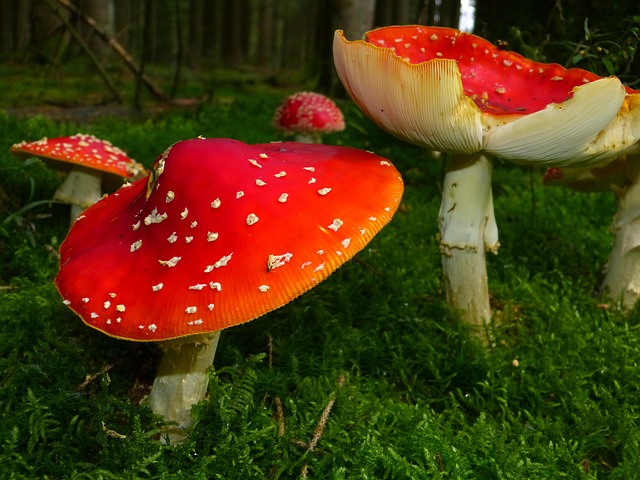Flies, often considered pests, pose complex environmental challenges. Traditional management methods, relying on chemical pesticides, harm ecosystems and non-target species. In response, customized fly control plans are gaining popularity as eco-friendly alternatives. These tailored strategies focus on eliminating breeding sites, reducing attractants, and employing humane methods like biological control and traps. By addressing specific facility challenges, these plans minimize chemical use while maintaining a balanced environment for humans and wildlife, offering a sustainable solution to fly management.
In today’s world, effective fly management is essential for maintaining a healthy environment and comfortable living spaces. This article explores humane and environmentally friendly solutions to tackle this persistent problem. We delve into the behavior of flies and their impact on ecosystems, comparing traditional methods with more compassionate alternatives. Additionally, we highlight the power of customized fly control plans, offering tailored strategies for long-term success while minimizing ecological disruption.
Understanding Fly Behavior and Their Impact on Environment
Flies are more than just a nuisance; their behavior and impact on the environment are intricate aspects to consider when implementing effective fly management solutions. Understanding their life cycle, which involves rapid reproduction and short lifespan, is key to developing tailored strategies. These insects are attracted to organic matter, food waste, and water sources, making them prevalent in environments with high biodiversity and ample resources.
Their ability to breed rapidly in contaminated areas can lead to thriving populations, causing environmental harm. Fly management should, therefore, focus on customized fly control plans that target breeding sites, reduce attractants, and employ humane methods like biological control, traps, and targeted treatments. By minimizing the use of chemical pesticides, we can mitigate ecological disruptions caused by flies while ensuring a healthier environment for both humans and wildlife.
Traditional vs. Humane Fly Management Techniques
In the battle against flies, traditional methods often resort to harsh chemicals and lethal traps, causing potential harm to non-target species and the environment. This raises concerns about the sustainability and ethics of such practices. As a result, there’s a growing shift towards humane and environmentally friendly fly management solutions. These innovative techniques offer a more delicate approach, focusing on prevention, habitat modification, and biological control instead of outright extermination.
Customized fly control plans play a pivotal role in this transformation. By understanding the specific needs and challenges of each environment, experts can design targeted strategies that minimize the use of chemicals. This includes implementing effective sanitation practices, eliminating standing water, and introducing natural predators or parasitoids to regulate fly populations. Such tailored methods not only reduce ecological impact but also foster a healthier and more sustainable balance in affected areas.
Customized Fly Control Plans: A Tailored Approach
Many traditional fly management methods employ harsh chemicals and extreme measures, which can be detrimental to both the environment and non-target organisms. In response to this issue, businesses and professionals are now offering customized fly control plans. These tailored solutions recognize that every facility, whether a farm, food processing plant, or waste management site, has unique challenges and requirements when it comes to fly control.
By assessing the specific conditions of each location, including identifying fly breeding sites, understanding traffic patterns, and evaluating existing control measures, experts can design targeted strategies. Customized fly control plans often incorporate a combination of non-chemical methods such as improved sanitation, structural modifications, and biological controls. This personalized approach ensures more effective and sustainable fly management while minimizing the ecological impact.
Eco-Friendly Solutions for Long-Term Fly Management Success
Implementing eco-friendly solutions for fly management doesn’t have to be a sacrifice; it can be a strategic approach that leads to long-term success. Customized fly control plans tailored to specific environments and needs are key. These plans often involve a combination of biological, physical, and chemical methods that work in harmony with nature rather than against it. For instance, introducing natural predators like certain bacteria or birds can effectively reduce fly populations over time.
Physically, strategies such as proper waste management, improved sanitation, and structural modifications can significantly limit breeding grounds and entry points for flies. Additionally, using environmentally friendly chemicals, traps, or repellents that are specifically targeted and minimal in impact, ensures that the methods used are safe for other wildlife, pets, and humans while still achieving effective fly control.
In conclusion, adopting humane and environmentally friendly fly management solutions is a multifaceted approach that considers both pest control and ecological preservation. By understanding fly behavior, comparing traditional techniques with more compassionate methods, and implementing tailored, eco-friendly strategies like customized fly control plans, we can achieve effective fly management while minimizing harm to the environment and animal welfare. These sustainable practices are essential for fostering a healthier balance in our ecosystems and communities.
